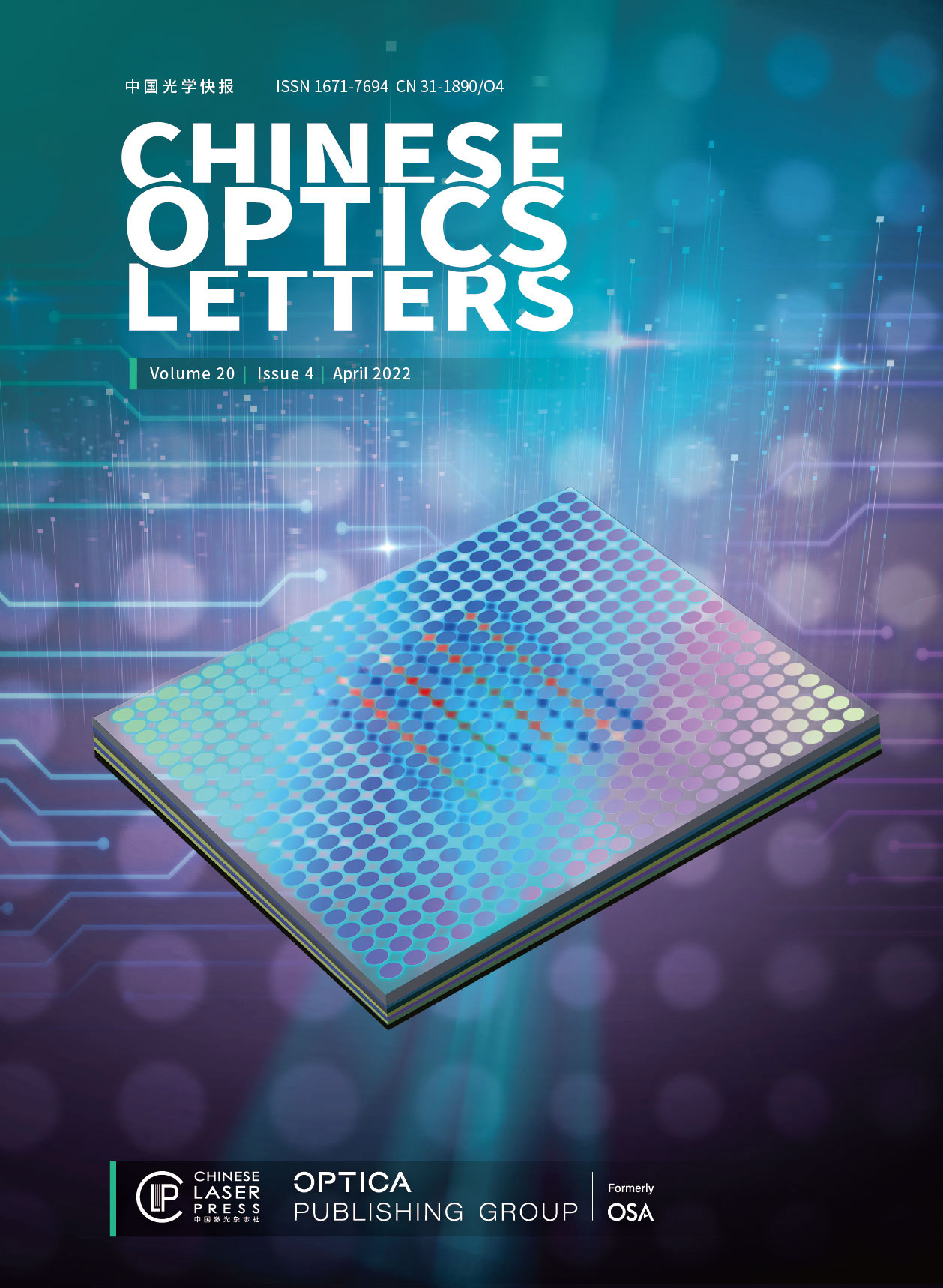Journals >Chinese Optics Letters
- Publication Date: Feb. 16, 2022
- Vol. 20, Issue 4, 040601 (2022)
- Publication Date: Feb. 14, 2022
- Vol. 20, Issue 4, 040602 (2022)
- Publication Date: Feb. 16, 2022
- Vol. 20, Issue 4, 040603 (2022)
- Publication Date: Feb. 16, 2022
- Vol. 20, Issue 4, 041101 (2022)
- Publication Date: Feb. 16, 2022
- Vol. 20, Issue 4, 041301 (2022)
- Publication Date: Feb. 16, 2022
- Vol. 20, Issue 4, 041401 (2022)
- Publication Date: Feb. 11, 2022
- Vol. 20, Issue 4, 041402 (2022)
- Publication Date: Feb. 11, 2022
- Vol. 20, Issue 4, 041403 (2022)
- Publication Date: Mar. 09, 2022
- Vol. 20, Issue 4, 041404 (2022)
- Publication Date: Mar. 09, 2022
- Vol. 20, Issue 4, 041405 (2022)
- Publication Date: Feb. 18, 2022
- Vol. 20, Issue 4, 043801 (2022)
- Publication Date: Feb. 15, 2022
- Vol. 20, Issue 4, 043601 (2022)
- Publication Date: Feb. 14, 2022
- Vol. 20, Issue 4, 041901 (2022)
- Publication Date: Feb. 28, 2022
- Vol. 20, Issue 4, 041902 (2022)
- Publication Date: Mar. 10, 2022
- Vol. 20, Issue 4, 042201 (2022)
- Publication Date: Feb. 18, 2022
- Vol. 20, Issue 4, 042501 (2022)
- Publication Date: Mar. 09, 2022
- Vol. 20, Issue 4, 043201 (2022)
About the Cover
Monolithic integration of III-V lasers with small footprint, good coherence and low power consumption based on CMOS-compatible Si substrate has been known as an ef?cient route towards high-density optical interconnects in the photonic integrated circuits. However, the material dissimilarities between Si and III-V materials limit the performance of monolithic microlasers. Here, under the pumping condition of continuous-wave 632.8nm He-Ne gas laser at room-temperature, we achieved InAs/GaAs quantum dot photonic crystal band-edge laser, with the crystal directly grown on on-axis Si (001) substrate. This provides a feasible route towards a low-cost and large-scale integration method for light sources on the Si platform.












